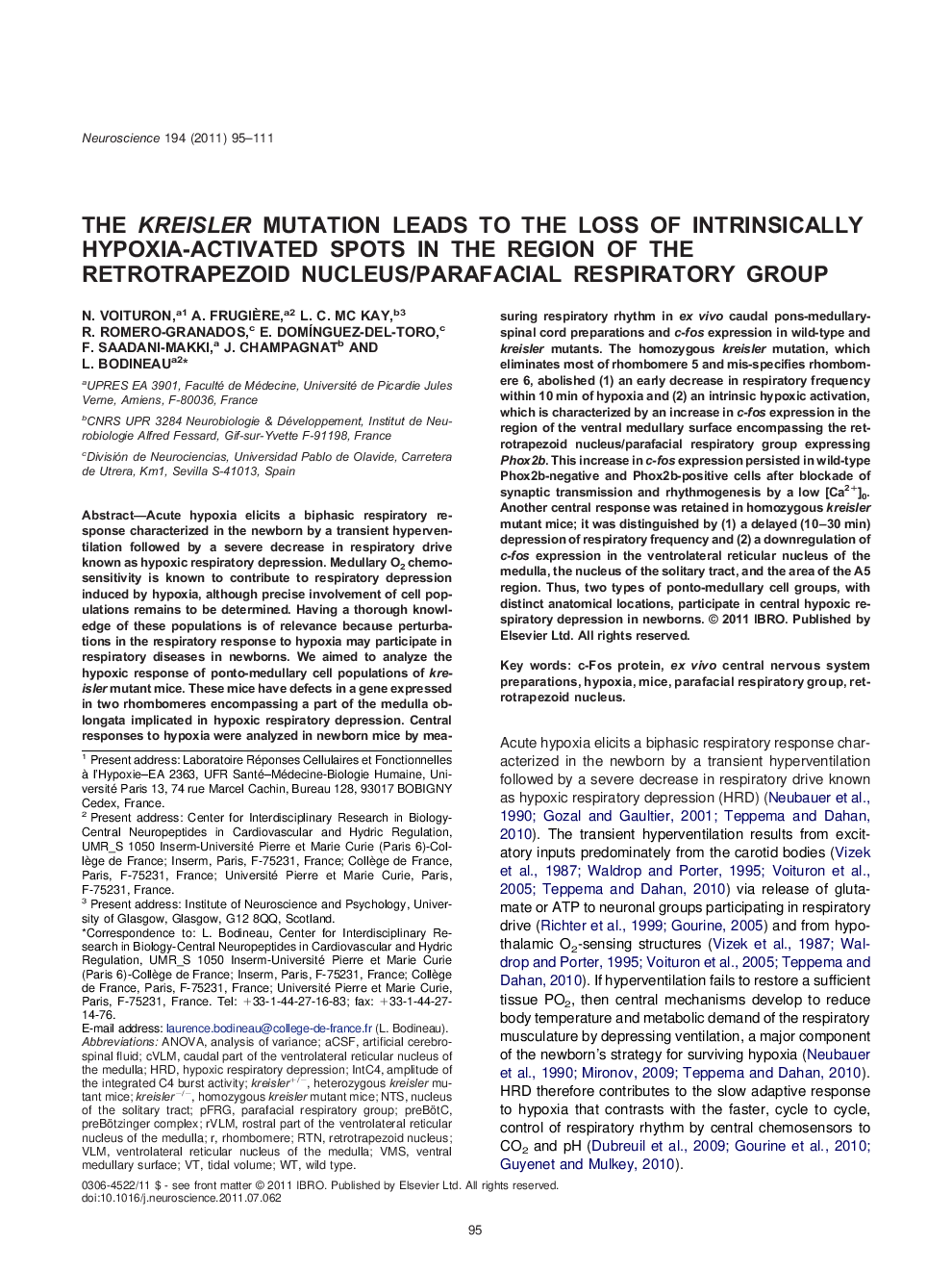| Article ID | Journal | Published Year | Pages | File Type |
|---|---|---|---|---|
| 4338801 | Neuroscience | 2011 | 17 Pages |
Acute hypoxia elicits a biphasic respiratory response characterized in the newborn by a transient hyperventilation followed by a severe decrease in respiratory drive known as hypoxic respiratory depression. Medullary O2 chemosensitivity is known to contribute to respiratory depression induced by hypoxia, although precise involvement of cell populations remains to be determined. Having a thorough knowledge of these populations is of relevance because perturbations in the respiratory response to hypoxia may participate in respiratory diseases in newborns. We aimed to analyze the hypoxic response of ponto-medullary cell populations of kreisler mutant mice. These mice have defects in a gene expressed in two rhombomeres encompassing a part of the medulla oblongata implicated in hypoxic respiratory depression. Central responses to hypoxia were analyzed in newborn mice by measuring respiratory rhythm in ex vivo caudal pons-medullary-spinal cord preparations and c-fos expression in wild-type and kreisler mutants. The homozygous kreisler mutation, which eliminates most of rhombomere 5 and mis-specifies rhombomere 6, abolished (1) an early decrease in respiratory frequency within 10 min of hypoxia and (2) an intrinsic hypoxic activation, which is characterized by an increase in c-fos expression in the region of the ventral medullary surface encompassing the retrotrapezoid nucleus/parafacial respiratory group expressing Phox2b. This increase in c-fos expression persisted in wild-type Phox2b-negative and Phox2b-positive cells after blockade of synaptic transmission and rhythmogenesis by a low [Ca2+]0. Another central response was retained in homozygous kreisler mutant mice; it was distinguished by (1) a delayed (10–30 min) depression of respiratory frequency and (2) a downregulation of c-fos expression in the ventrolateral reticular nucleus of the medulla, the nucleus of the solitary tract, and the area of the A5 region. Thus, two types of ponto-medullary cell groups, with distinct anatomical locations, participate in central hypoxic respiratory depression in newborns.
▶O2 sensors are in the retrotrapezoid nucleus/parafacial respiratory group. ▶Kreisler mutants exhibit changes in the pontomedullary hypoxia-sensitive properties. ▶O2 sensors and early decrease in respiratory drive are abolished in kreisler mutants. ▶Secondary decrease in respiratory drive was retained in kreisler mutants.
